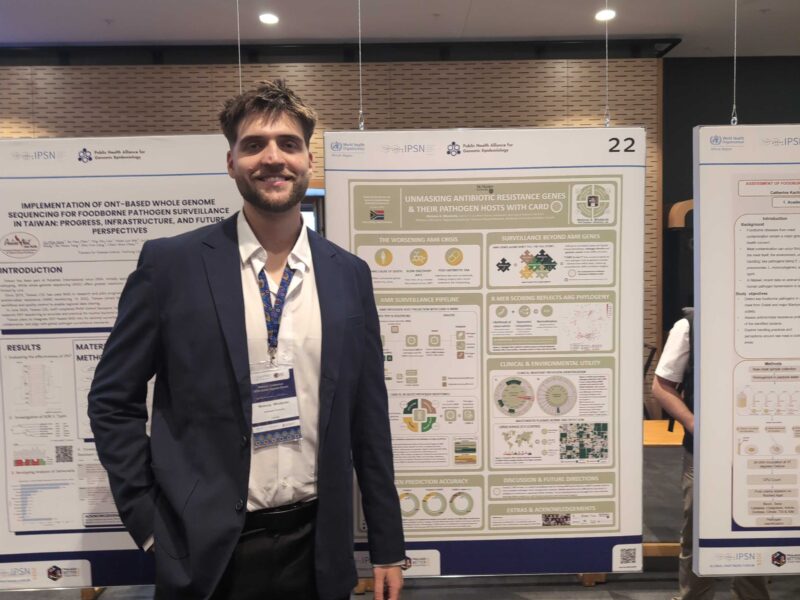 Congratulations Martins Oloni on the successful defence of your Masters of Science!
Congratulations Martins Oloni on the successful defence of your Masters of Science!
New Delhi Metallo-Beta-Lactamase (NDM) plasmid predictions
The complete detection and genome sequencing of resistance plasmids is required to understand the co-occurrence of resistance genes on plasmids and their transmission, which is necessary to mitigate the spread of drug resistant bacterial infections. One group of multi-drug resistance plasmids of interest are the New Delhi Metallo-beta-lactamase (NDM) associ-ated plasmids. Bacteria pathogens with NDM genes are resistant to a broad range of beta-lactam antibiotics, including carbapenems, a mainstay for treating bacterial infections. We sequenced clinical isolates collected from patients that failed to respond to antibiotic treatments in the Hamilton-Niagara community using Next Generation Sequencing (NGS) technology, which is the standard technique for sequencing bacterial genomes. I analyzed their assembled genomes via the development of a new resistance plasmid prediction bioinformatics pipeline: RGI:Mobilome. RGI:Mobilome predicted NDM bearing plasmids in 15 isolates, along with other resistance genes on plasmids. However, the NDM plasmid predictions of all 15 isolates were fragmented due to incomplete genome assemblies, caused by repetitive sequences within bacterial genomes and use of short-read NGS technology. However, plasmid predictions greatly improved when we leveraged the high nucleotide accuracy of NGS reads and the structural resolving power of long reads generated with the Oxford Nanopore Technology (ONT) to produce ‘hybrid’ genome assemblies. From the 15 putative hybrid assembly NDM plasmids, one plasmid was a complete match to a known pKP-NDM1 plasmid, seven plasmids were “variants” of known and well characterized plasmids, and the remaining seven plasmids were “distant homologs” of known and well characterized plasmids, suggesting previously undescribed NDM-associated plasmids in our community. This thesis project reveals the diversity of NDM plasmid types within the Hamilton-Niagara community, which is valuable to epidemiologists and public health practitioners to devise actionable plans required to mitigate the spread of multi-drug resistance NDM plasmids and for clinicians to treat infections caused by NDM positive strains.

